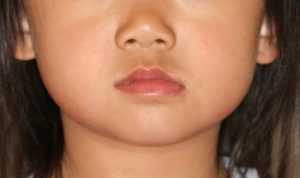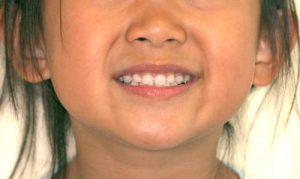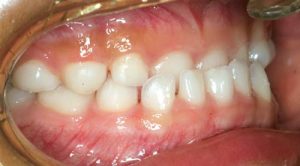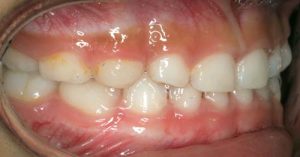Eighty percent of the jaws of a child develop before the age of 10. Modern trends in jaw and tooth development show that children still suffer from early childhood decay (ECC), and the jaws are not developing to their fullest potential during these critical early years. Basically, the genes we have for large jaws are not being properly expressed. Call it environmental influence, call it lack of proper diet and function, call it allergies. I will not discuss that issue here. However, I will discuss the terrible consequences as it relates to dental and general health.
First, an analogy.
Consider the room in the mouth as an actual room. The oral cavity of a child with a small jaw size (and consequently no spaces between baby teeth) can be compared to a small room where you find it hard to fit in or move around.
The oral cavity of a child, on the other hand, with worn down teeth and a deep bite can be compared to a room with a low ceiling. You can’t even walk in it upright.
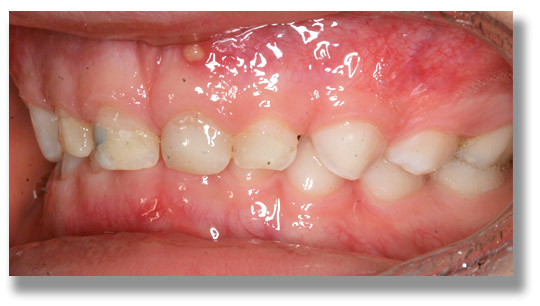 A deep bite in children is confirmed if you cannot see the lower incisors when they bite down.
A deep bite in children is confirmed if you cannot see the lower incisors when they bite down.
Who are we talking about? The tongue! The tongue grows to its genetically determined full size regardless of how much space is allowed within the oral cavity. Its functions, besides tasting, include phonetics (speech pronunciation), swallowing, and indirectly, keeping the airway open.
Place the tongue in a room with smaller dimensions (constricted jaw), OR a low ceiling (deep bite), OR both, it will not fit comfortably and cause serious long-term consequences.
Here is a list of these consequences as it relates to each of the tongue’s functions.
- Phonetics: children will tend to lisp due to a combination of insufficient space for the tongue and an altered programming of the muscles.
- Swallowing: Children will exhibit tongue thrust. The tongue just cannot find enough room to accommodate itself and protrudes between the teeth every time a child swallows – around 1000 to 2000 times a day. This repeated action causes the teeth to spread apart and develop a gap (open bite). This in turn will cause an occlusal (bite) probem not to mention bad esthetics.
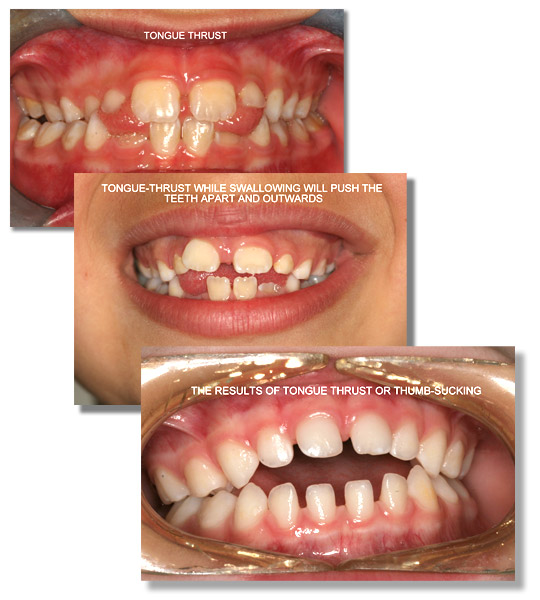
- Airway: The most serious consequence of all, a blocked airway will result due to the tongue falling back and obstructing the already narrow airway in the back of the throat. This is known as childhood sleep apnea, which is hardly diagnosed by paediatricians or general dentists unless they know which signs to look for. The signs, ironically, to look for in children, are different than those in adults.
1. increased hyperactivity with an inability to concentrate during the day,
2. grinding of teeth at night
3. dark circles under the eyes.
4. bedwetting.
5. frequent earaches.
Grinding and snoring in children is not normal. If the child is 4-7 years old, grinds and snores, and exhibits some of the abovementioned signs, and has a small jaw size, a deep bite, or worn down lower incisors, then the first step we take is to build up the vertical dimension on their baby molars. This in itself will be sufficient for this early age, without resorting to removable appliance therapy, to provide a sound solution for improving airway and function. It will have a permanent orthopedic effect on the jaw as the permanent teeth erupt to a restored vertical dimension and even alleviate some future crowding. After age 7, arch development can still be initiated with appliances if there is an arch deficiency.
Bite opening procedure: a bite key is constructed to fit behind the top incisor teeth. This is adjusted to create the desired vertical space between the back lower baby molars (two on each side). Their fissures are cleaned out t(to prevent future cavities), they are then primed and bonded with composite. Before the composite is cured, the child is instructed to bite into the upper key to mold the still soft composite into the correct shape and vertical dimension. After all composites are placed, they are adjusted and polished. These children adapt surprisingly fast to their new bite and by the time these baby teeth are lost, the jawbone and the permanent molars coming in behind them will have grown to consolidate that position.
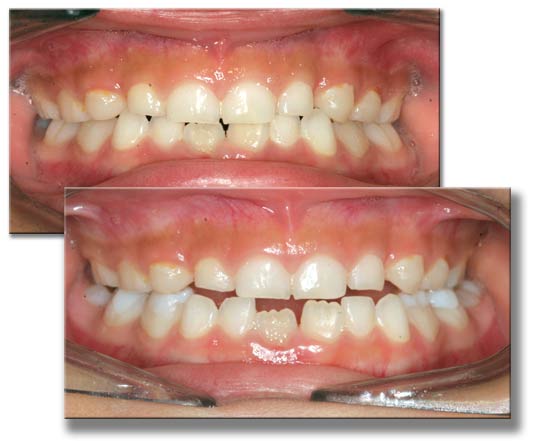
Before (top) and after (bottom) the bite opening procedure
 Front and side view after another bite opening procedure.
Front and side view after another bite opening procedure.
To read more about jaw development and jaw orthopedics, please read more in these links:

